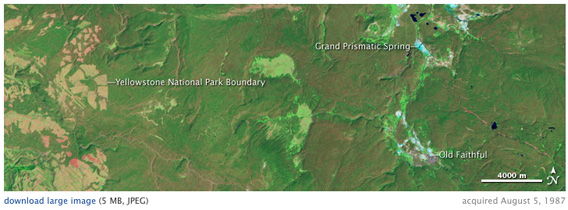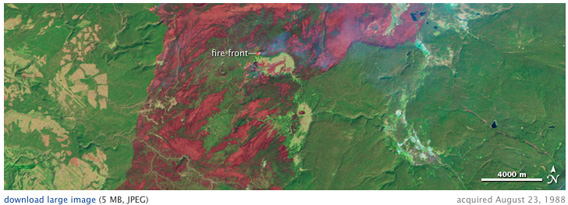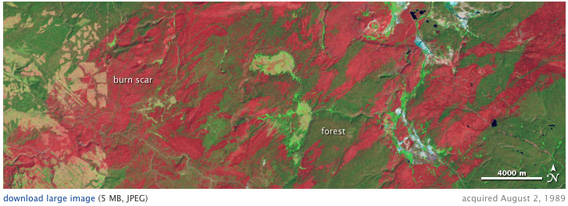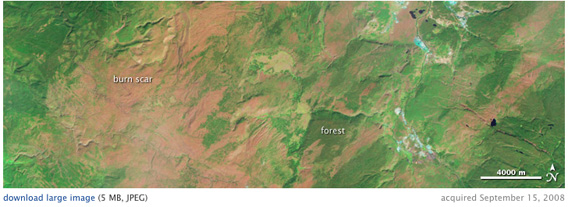|
|
Satellite images released by NASA show a gradual recovery of forests affected by massive fires during the summer of 1988 in Yellowstone National Park. Fires during that hot and dry summer burned nearly 36 percent of the park — some 793,000 of the park’s 2,221,800 acres.
Images acquired by the Landsat-5 satellite show pre- and post-fire forest cover in Yellowstone. Burn scars are still evident today, more than 20 years after the fires.
The series is part of NASA Earth Observatory’s ongoing World of Change: Burn Recovery in Yellowstone.
The following captions are courtesy of NASA.

The top image, from 1987, shows the park as it had been for many years. Dense stands of tall, straight pine trees covered the high, volcanic plateau. The old forest is dark green in the image. The summertime forest is broken up by bright green, grassy river meadows and the occasional brush and grass plain, lighter green and tan. Mineral-rich geyser fields are pale blue and white, and lakes are dark blue.

|
Just one year later, charred trees and grasses replaced the forests and meadows. The freshly burned land is dark red. The fire was still burning when the 1988 image was acquired on August 23. The fires glow bright pink, and a faint pall of smoke hangs over the scene. If the image had been made with visible light, to resemble what a person would see from the air, the smoke would be denser than it is in this infrared image. The smoke is blue in the infrared light.

|
In the 1989 image, the full extent of the fire is revealed. The burned land surrounds Old Faithful and extends throughout western Yellowstone. This satellite view reveals that the fire did not burn everything in a destructive swath. The burned area is patchy, and the severity of the burn varies from place to place. Darker red areas are severe burns, and lighter red areas are less severe.

|
Twenty years after the fire, the burn scar was still evident, though faded to a pale tan. By this time, new pine trees had taken root, and the forest had started to return. The newly growing trees grow more quickly than older, mature forests. As a result, they are lighter in color in the 2008 image. Fingers of new forest are most evident intruding into the narrow strip of burned land on the right edge of the image. Forests are likely returning elsewhere as well, but the small trees do not produce a dense enough canopy to show up well in the image.
NASA says that fire is a natural part of Yellowstone’s ecology, so much so that a number of plant species need fire to regenerate. The 1988 fires were ignited by lightning strikes and people.